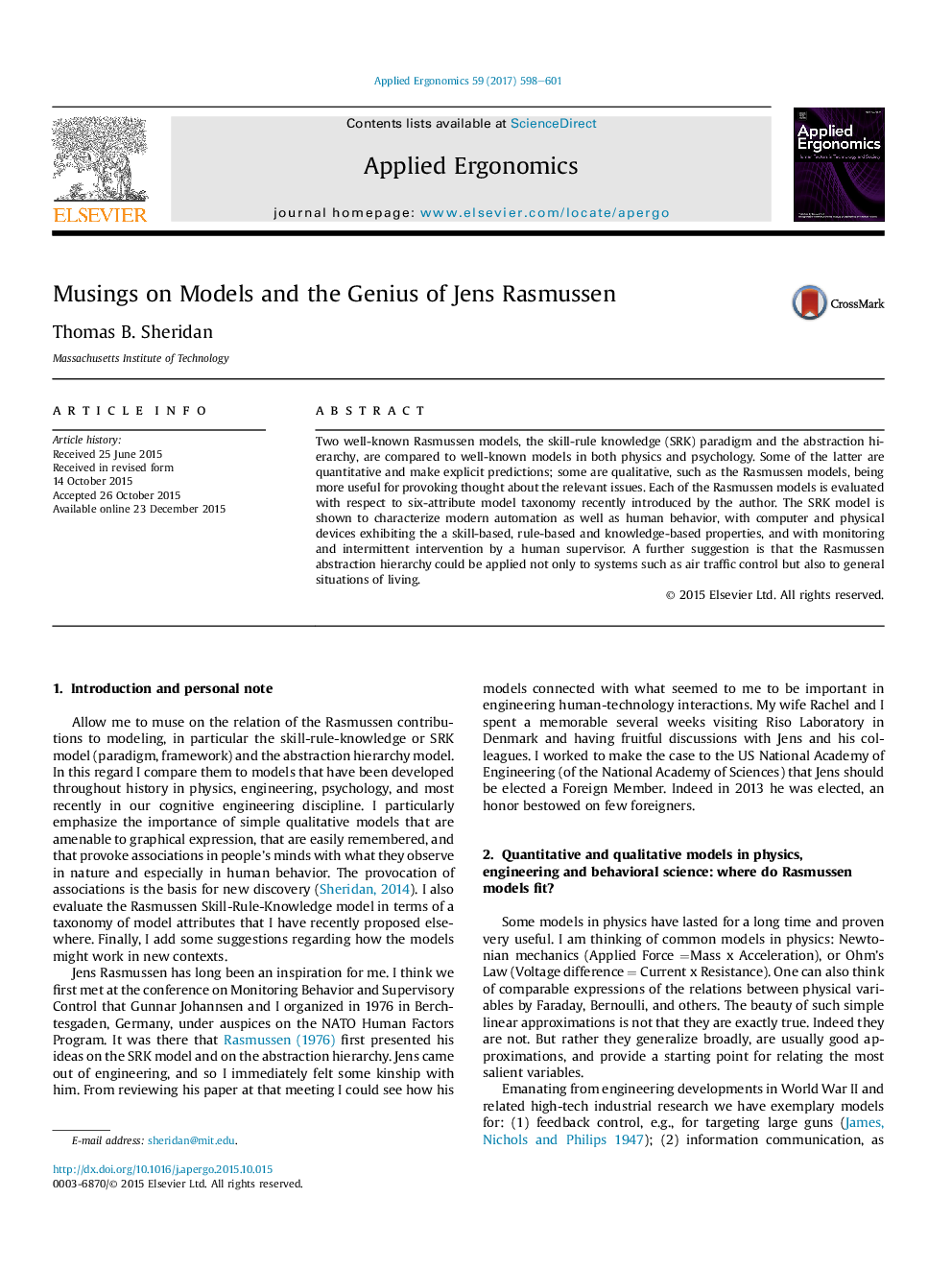| Article ID | Journal | Published Year | Pages | File Type |
|---|---|---|---|---|
| 4972140 | Applied Ergonomics | 2017 | 4 Pages |
Two well-known Rasmussen models, the skill-rule knowledge (SRK) paradigm and the abstraction hierarchy, are compared to well-known models in both physics and psychology. Some of the latter are quantitative and make explicit predictions; some are qualitative, such as the Rasmussen models, being more useful for provoking thought about the relevant issues. Each of the Rasmussen models is evaluated with respect to six-attribute model taxonomy recently introduced by the author. The SRK model is shown to characterize modern automation as well as human behavior, with computer and physical devices exhibiting the a skill-based, rule-based and knowledge-based properties, and with monitoring and intermittent intervention by a human supervisor. A further suggestion is that the Rasmussen abstraction hierarchy could be applied not only to systems such as air traffic control but also to general situations of living.
